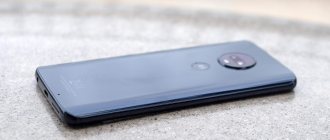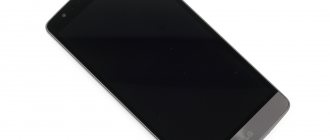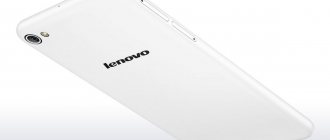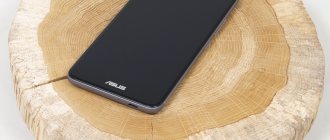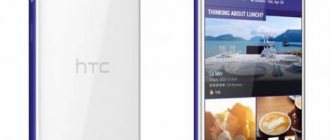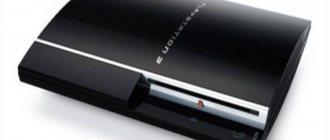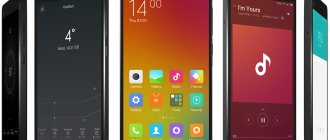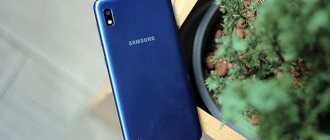Motorola One is the company's new mid-range smartphone that was created in collaboration with Google, thanks to which it runs on Android One OS.
The phone costs 20 thousand rubles. However, is spending so much money on this device justified? What you should pay attention to? How does it work in everyday use? I will answer these and other questions in this review.
Motorola One specifications
The Motorola One smartphone features a 5.9-inch IPS display with HD+ resolution. Its heart is an octa-core Qualcomm Snapdragon 625 processor with Adreno 506 graphics chip, which is supported by 4 GB of RAM and 64 GB of internal memory.
The main camera here is double - 13-megapixel with f/2.0 aperture + 2-megapixel with f/2.4. And the front lens for selfies is 8-megapixel. Connectivity in One is provided by the following modules: dual-band Wi-Fi 802.11 a/b/g/n (2.4 GHz and 5 GHz), LTE, Bluetooth 4.2, NFC, GPS, A-GPS, Glonass, Beidou and Galileo.
The gadget runs on the Android 8.1 Oreo (Android One) operating system and consumes energy from a 3000 mAh battery with TurboPower fast charging technology. Its dimensions are 149.9 x 72.2 x 7.9 mm and weighs 162 grams.
Advantages and disadvantages of One Power phone
The Motorola One Power measures 75.9 mm wide, 155.8 mm long and 9.98 mm thick. Men with large hands can easily operate it with one hand, but women with small hands may feel that the device is too big for them. The weight of the device is about 170 grams, this weight is quite noticeable if you hold the phone in one hand; when working with the phone with one hand for a long time, the hand may well get tired.
When looking at the overall ease of use of the phone, there are some issues with it due to the weight or size of the device, but if the other features of the device make up for its shortcomings, then buying this phone is a good choice.
The smartphone is equipped with an 8-core Qualcomm Snapdragon 636 processor, which is made on 14 nm. technical process.
The smartphone has 4 GB. RAM, which is quite enough. In very rare cases it will not be enough, but with this amount of RAM, you will rarely have problems.
The device's data storage capacity is 64 GB, and while this is enough for photos, it may not be enough for video shooting and a large number of games.
The phone is compatible with SD cards, so you can easily expand its memory. So you probably don't need to worry about storage capacity.
One Power has a display diagonal of 6.18 inches. It's quite big. Photos, videos and games will look great on this screen. It is also suitable for productive use, such as creating a business document.
The smartphone has a high-end display and any graphic content you display on it, including videos and games, will be displayed clearly.
The main camera of the phone has 15.93 megapixels and can take high-resolution photos and videos. While you're shooting landscapes or printing high-definition photos, you may want a higher-resolution camera, but most of the time you'll be happy with the camera.
The smartphone has a front camera of 12.19 megapixels, which is quite high. Photos taken with this camera will look sharp even if you print them, so you will be quite satisfied with the quality of the camera.
The Motorola One Power battery capacity is 5000 mAh, which is a very large indicator. Compared to other smartphones, the Motorola One Power's battery life is very long. With such a capacity, you will be pleasantly surprised by the battery life. Even if you watch videos or play games for a long time, you will not have any problems with the battery.
What is in the box?
The box we get the Motorola One in is not too different from other Motorola devices. The colors on the packaging go from blue to purple beautifully and look very nice. On the front there is the manufacturer’s logo, the inscription Android One and about the device model. On the sides we will also find the manufacturer's logo and Android One, and on the back, the most important information and illustrations are indicated with the available color versions.
In addition to the phone, the kit includes a charger with a removable USB cable, a key for removing the card tray, basic documentation, and a transparent case. As you can see, the equipment isn't extensive, but you can't expect much from a device at this price.
Construction and design
I have always appreciated Motorola smartphones because of their perfect and unique design. Unfortunately, with the release of the iPhone, Android phone manufacturers began producing gadgets with a cutout at the top of the screen (notch). Moto remained indifferent to this trend for a long time, and it seemed that we would not find a model with a cutout in the manufacturer's portfolio for a long time. However, this company also underwent the mentioned fashion, as a result of which Motorola One received bangs.
The design will appeal to many, but definitely not to everyone. As far as I'm concerned, One looks good and will undoubtedly find its supporters. There is nothing special on the front side, but the device looks very interesting from the back. Importantly, the Motorola midi is made entirely of glass-like plastic that covers both the back and the edges. At first I was sure it was glass, but after a closer look I realized it was not. However, I don't consider this a disadvantage because the material used here is of good quality.
However, such a smooth surface attracts fingerprints, making it difficult to keep the device clean. The coating is susceptible to scratches, but after testing, I was surprised to find no serious damage. And finally, the body of the Motorola One is slippery, so the smartphone “slips away” even when we place it on a flat surface. Fortunately, all of the aforementioned caveats or defects can be “removed” by wearing the case that the manufacturer includes with the kit. Although it does not look very aesthetically pleasing and spoils the appearance, the main thing is that it protects the device from mechanical damage.
A good solution to place the logo on the fingerprint scanner - it looks great. I evaluate the quality of workmanship positively - all the elements fit perfectly, here you can notice the attention to detail, which is pleasing. The buttons are also properly integrated into the body - I have no objections. I can only find fault with the protruding lenses on the back panel; because of them, the smartphone does not lie directly on flat surfaces, and the lenses themselves are vulnerable to damage.
Let's talk about the arrangement of elements. Above the display glass you will find the front camera lens, a set of sensors and an earpiece. Below the screen there is only the manufacturer's logo. On the back side, there are two cameras, a dual LED flash, the Motorola and Android One logo, as well as several inscriptions and trademarks. As for the edges, on the right we have buttons for volume control and a switch. On the left side there is a card slot, the top edge is occupied by a 3.5 mm headphone jack and microphone, and at the bottom there is a USB Type-C port, a microphone and a multimedia speaker.
Smartphone screen
The Motorola One features a 5.9-inch IPS display with HD+ resolution (1520×720 pixels) and a 19:9 aspect ratio that gives a pixel-per-inch density of 287ppi. This value is unimpressive, although in practice the quality of the fonts displayed is acceptable; at a shorter distance, a trained eye will notice jagged edges. As for setting up content on a stretched 19:9 screen, there should be no problems - all applications scale automatically.
It's also worth noting that the screen-to-body ratio here is about 80%. As I mentioned, the frames appear relatively narrow, but they are much wider than what we see on some flagship devices. There is a notch at the top of the display, some people like it, others don't. I'm neutral on this issue and the unibrow doesn't bother me in any way. I would like to point out that the cutout on the One cannot be hidden.
The Motorola One phone has an IPS display characterized by pleasant colors, good viewing angles and contrast. The maximum brightness is sufficient, allowing you to comfortably use the device in the sun, although I got the impression that competitors from the price shelf are a little better in this regard. Nevertheless, the minimum brightness here is so low that it does not strain the eyes when using the device at night. In weaker lighting conditions, we can additionally enable night mode, which reduces blue light emissions.
Of course, there is a light sensor, which during my tests did not cause problems and worked as it should. In the screen settings we can change the color mode, display mode, and also the font size.
Camera
Let's start with the front camera, here's an example. It’s ordinary, there aren’t very many settings, and it doesn’t have effects like portrait photography.
If you turn the phone over, you will see three modules: regular, ultra-wide-angle and auxiliary for shooting portraits.
The main one takes pictures normally during the day, but in the evening or in a room without bright light the quality will be at a low level; an auxiliary night mode would be useful. Although you can use a flash if you wish, this is not for everyone.
I wanted to share examples of shooting with an additional ultra-wide-angle lens, but it turned out that it does not take photographs, but only shoots video. An unexpected move, of course. Then look at some examples of filming, here are a couple of videos. If in normal mode recording is in 4K and 30 frames per second, then the action camera records Full HD and 60 frames per second.
As a camera for creative scenes, the additional module is just right. I especially liked that in the settings you can choose the shooting mode: vertical or horizontal. Yes, yes, horizontal videos are also obtained when you hold the phone vertically, it is much more convenient to shoot with one hand.
Other options include a built-in function for creating photos with GIF overlay, slow and fast shooting, as well as manual mode.
Cameras in Motorola One
The main module of Motorola One is two cameras located on the rear panel, 13 MP f/2.0 + 2 MP f/2.4. The main lens focuses using PDAF phase detection. The second, with a lower resolution, for measuring depth of field when shooting with bokeh effect. As for the app, it is intuitive and easy to use and offers a lot of features.
In the application you will find the following modes: photo, video, portrait, sports, moving photos, panorama, slow motion, videos, live and YouTube. You can also enable Active Photo mode, which allows you to take photos that precede a short video. What's important is that the Google Lens feature is already integrated with the camera application, this allows you to scan text, phone numbers, QR codes, recognize or search for similar objects.
Quality and portrait mode
The photos on the One from Motorola look good, but I expected better results from this gadget. The images are admittedly well-reproduced, although colors are a little faded in some examples. However, they are still positively surprised by the amount of detail, as well as the sharpness. In this regard I have no objections. Everything looks noticeably worse when we run out of light and it gets dark. Photos taken in low light conditions have good color reproduction, but detail and sharpness leave much to be desired.
A few words about portrait mode. I admit I'm not a fan of this feature from Motorola. The blur itself looks quite nice and interesting, but at the edges of objects you may see errors in shape or the appearance of unnatural blur. These are not critical flaws, however, they greatly spoil the final result.
Front camera
At the front, this Motorola phone sports an 8MP selfie camera. Speaking of selfie quality, it’s good. On the plus side, the camera does not tend to burn out bright scenes, which happens very often even with more expensive models. Unfortunately, color reproduction, sharpness and detail here are not impressive. This should be enough for social networks.
Shooting video
Videos on the Motorola One can be recorded at a maximum resolution of 4K and 30 frames per second. Here you can also shoot in Full HD mode at 60 and 30 frames. It is worth noting that digital stabilization is only active for Full HD.
The overall quality of the recordings is satisfactory - they are stable and have fast and smooth exposure changes. Autofocus operation while shooting video also has a positive effect on the result. I only have reservations about the color, they don’t know why, but the final videos have a slightly yellow color.
Motorola Phone
The Motorola One is a new phone from Motorola in the mid-range price range, higher class than the G series, but lower than the Z. The Motorola One offers fairly average specifications, but a nice design and, importantly, the Android One operating system.
There are plenty of great Android phones available for the same price these days, so let's take a closer look at the Motorola One - is there anything game-changing here?
Motorola One design
The design of the Motorola One is very nice. The back surface is glass, black, which is unusual for this price. The cameras are located vertically next to the logo. The phone is quite thin, light, and comfortable to hold - overall it doesn't feel as big as the screen size might make you think.
The Motorola logo is also a fingerprint scanner, it is located very well and works quickly.
In terms of functionality: there is an NFC module, a headphone jack, support for two SIM cards that can be used with a MicroSD memory card. Smart learning allows the smartphone to predict which of the two you want to use based on the time of day and usage history. In addition, there is a USB-C connector.
There is no protection against water and dust, which follows from the price. There is, however, splash protection.
Motorola One Software
Let's start with the good. Android One is pleasant and convenient to use; updates are released quickly and with enviable regularity. Due to the good service of this software, phones like Nokia 7 Plus have become popular.
While there will always be fans of different Android skins, you just have to accept that stock software will run much faster, especially on low-power devices. The interface has much fewer all kinds of add-ons and bonuses, just take two identical phones and compare - basic Android will work faster.
Moreover, they update faster. Manufacturers have to make sure all their customizations work with updated Android, but if you have an Android One phone, you just get the update right away.
If your phone has a mid-range processor and not a lot of RAM, it makes sense to make it as easy as possible and make sure the device runs the latest version of Android, and it's usually cheaper for the manufacturer. There are no downsides, unless you can’t live without EMUI, MIUI or Color OS. In this case, you need Android 8.1 with monthly security updates and at least two annual system updates.
Personally, we're very happy to have Android One installed here. It's actually strange that he's still not very popular.
Although overall it looks like basic Android, the manufacturer has added a few of its own features. Firstly, the so-called Moto Actions. These are the same as on other Motorola devices, for example, you have the ability to turn on the flashlight by swishing the phone twice, or turn on the camera by twisting it sharply. Everything works fine, the main thing is not to accidentally drop the phone on the floor.
Motorola One Features and Performance
Thanks to high-quality software, the performance of this phone gets a solid four. The smartphone is powered by a Snapdragon 625 processor, which is quite strange - other devices available at the same price already have a Snapdragon 660.
The set also comes with 4 GB of RAM and 64 GB of internal memory, which can be expanded up to 256 GB. Plus you get unlimited cloud storage for photos from Google.
The indicators are far from ideal. According to Antutu, the smartphone was ahead of only 20% of its competitors. As you would expect, hardware significantly affects the performance of the phone. You won't be able to download Asphalt 9, and PUBG will run mediocre, even on very low settings.
Apart from games, the phone can basically handle any task. The interface works fairly quickly, although apps are sometimes slow to load and the keyboard doesn't always appear instantly as on more powerful devices.
Even for such a fairly low price, performance leaves much to be desired. OK for everyday tasks, but no more.
Motorola One battery
The 3000 mAh battery is not huge, but should be enough for a day. Turbo Power fast charging allows you to extend your charge for an additional 6 hours in just 20 minutes.
Motorola One display
IPS LCD display - 5.9 inches, aspect ratio 19:9, quite noticeable notch, the screen occupies 85% of the body. Unfortunately, the resolution is only 720p, so that's another reason why this phone isn't great for gaming. There is one microphone at the bottom of the screen, which is quite easy to accidentally cover with your finger.
Motorola One Camera
The main camera is 13 megapixels with aperture 2.0, plus a 2 megapixel depth sensor that will allow you to shoot in portrait mode. The aperture, unfortunately, does not always provide this opportunity, but autofocus works well.
The front camera is 8 megapixels, the pictures are quite mediocre.
Motorola offers its own camera app instead of the basic one, which has some pretty cool features: one that lets you select one color and make the rest of the image black and white, another that lets you take a photo with just one moving element.
You can film someone pouring tea into a cup, while everything except the tea will be static, or a waterfall that moves, but everything around it does not.
The effects are pretty cool, but we weren't always able to use them. If you want more functionality, download the G6 app from the Play Store and you'll also get the full Moto Actions pack.
In principle, it is logical to expect average photo quality from a phone. Due to the lack of stabilization, it happens that the frame is blurred - so you don’t even have to try to shoot something on the go. You won't be able to take good photos in poor lighting either. Portrait mode is far from ideal, although not critically bad.
In principle, this camera is suitable as an everyday option. Sometimes it even takes very good pictures, and it’s interesting to try out all its functions. However, this is definitely not the best option on the market at this price. The camera also has Google Lens built in, which is quite convenient if you want, for example, to find out where to buy something you saw on the street.
So is the Motorola One worth the money?
The phone is quite interesting and pleasant to use primarily thanks to Android One, additional camera features, compact size and neat design.
You can already buy Motorola One 2SIM 4GB 64Gb Ceramic Black in our Moto Store!
Software
Motorola One is equipped with Android One interface, so the smartphone runs a pure version of Google's operating system. In this case, Android 8.1 Oreo with security patches dated August 1, 2020. The clean version of the OS does not have too many functions, however, it will find its supporters.
Google, of course, allows Android One smartphone makers to implement their additional features into the software. In the case of the Motorola One, we only have a few such additions.
Motorola P30 Note (about 15,500 rubles on AliExpress)
If the Motorola One is intended mainly for Europe, then the P30 Note is a Chinese “citizen”. It has a 6.2-inch Full HD display, a metal body, and separate card slots (like the Motorola One, by the way). The package includes 15-watt fast charging.
The main feature of the smartphone is its 5000 mAh battery. Such batteries are quite rare in models of large companies (today - only in ASUS and Samsung). In China, the Motorola P30 Note is sold with some kind of shell stretched over Android, but in India this device is known as the Motorola One Power. There it comes with a pure operating system and, like the Motorola One, it comes with Android One.
Productivity and Gaming
The model I tested hides a fairly old processor in its case. I'm talking about the Qualcomm Snapdragon 625 with Adreno 506 graphics and 4 GB of RAM, the chipset consists of 8 Cortex-A53 cores. When it comes to work, I have to admit that the Motorola One handles the load really well, although it is not without its nuances.
In everyday use, the One performs very well. He carries out orders with virtually no hesitation - quickly and smoothly. There are no problems with serious slowdowns here, although the gadget likes to interrupt on its own. The graphics of the Adreno 506 also handle the tasks very well, making playing well-known and popular titles a smooth experience.
On this Motorola I tested games such as Asphalt 8, Real Racing 3, Need For Speed and Dead Trigger 2. It is worth remembering that the set is relatively old and may be obsolete soon. During the tests, I did not notice that the smartphone body was heating up in any way. With longer games, the phone gets a little warmer at the top.
Fingerprint's scanner
The fingerprint scanner on the Motorola One has been placed on the back, positioned just below the index finger, so that our finger naturally rests on it once grasped. The reader is placed in a recess, so it is easy to find. It's always active, meaning you only need to press your finger to unlock it.
In addition, the sensor works properly in any situation - during tests I could not notice any glitches. The scanner unlocks the phone very quickly, regardless of the angle of the finger. It can also be used to authorize payments or access the application.
Sound quality
As I mentioned earlier, the multimedia speaker on the Motorola One is placed on the bottom edge. This arrangement is not the best; the driver is very easy to mute by holding the device in a horizontal position.
As for the quality of the reproduced sound, I rate it positively, but without admiration. Among the competitors' devices, this phone sounds very right. When connecting a headset, the quality is definitely better than through a multimedia speaker.
Connectors and communication
We have at our disposal a dual-band Wi-Fi module (802.11 variable a/b/g/n/, 2.4 GHz and 5 GHz). I have no objections to its operation - the module receives communications without problems, even at a considerable distance from the source. Bluetooth 4.2 also worked great with additional accessories. Navigation during the entire testing period did not cause any problems - the signal was caught quickly.
During my tests of the Motorola One, I had no problems with the range of cellular networks, and the quality of calls here is at a very high level. My interlocutors heard me loud and clear, and I also had no problems understanding people on the other side.
Here we enjoy all the benefits of NFC and USB Type C. Equipment from Motorola includes a hybrid tray with two nanoSIM slots for two SIM cards (nanoSIM + nanoSIM or microSD + nanoSIM). The smartphone comes with 32GB of internal memory, of which around 22GB is available and the memory can be further expanded via microSD cards up to 256GB.
Motorola One Action: a smartphone with an action camera
Ultra-wide-angle lenses have long been successfully used in action cameras, allowing you to fit more objects into the frame. Not so long ago, similar modules appeared in smartphones. Motorola decided to develop this idea by adding some nice features like stabilization and the ability to shoot a wide shot without turning the device over. However, the advantages of the Motorola One Action smartphone are not limited to these features. Read all the details in this review.
Equipment
The smartphone comes in a bright lilac box. The kit includes a 10 W charger, a USB Type-C cable, a paper clip, documentation and a silicone case. A protective film was carefully glued to the smartphone, but they forgot to make a hole in it for the front camera, and all the photos turn out blurry until you remove it.
Design
The body of the smartphone is made of glossy dark blue plastic with a barely noticeable dot pattern. The material seems to attract fingerprints, scratches and dirt, and they are very difficult to remove due to the lack of an oleophobic coating, so carrying the phone without a case is completely contraindicated. In addition, the housing is splash-proof only (IPX2). In general, these nuances poorly correspond to the concept of action photography.
The screen here is ultra-extended, which has both its advantages and disadvantages. The device is much more comfortable to hold in your hand than other phones with the same diagonal, but reaching the top curtain will be noticeably more difficult. Modern films can be watched without frames, but videos on YouTube, not to mention old TV series (4:3 format), will have to be viewed with wide frames on the sides (or heavily cropped at the top and bottom). In action games, spaced controls make the screen less cluttered, but in strategy games the interface may seem too small. The dimensions of the device are 161.5 × 71.2 × 9.2 mm, and the weight is 176 g.
The arrangement of elements on the body is classic: the lock key and volume rocker are on the right, the combined SIM tray is on the left. Microphone, charging port (Type-C) and speaker on the bottom, second microphone and mini jack on the top. At the back there is a module with three lenses, protruding from the body by a millimeter, and below it is a dual LED flash. A fingerprint scanner with a logo is installed in the center.
The frames around the screen are small: 3 mm on the sides, 4 mm on the top and 6 mm on the bottom. The earpiece is a small slot where it transitions to the top edge. A special feature of the smartphone is its front camera, embedded in the screen. Unfortunately, the diameter of the cutout (7 mm) is almost twice the size of the lens, so it looks a little tacky, but this option is still better than the bangs.
Screen
The smartphone has a 6.3-inch screen with a cinematic aspect ratio of 21:9. The LTPS matrix provides rich colors and wide viewing angles. The resolution is 2520x1080 pixels, which gives a density of 432 ppi. In the settings you can adjust the colors, choose a light or dark scheme, and enable the “eye protection” option. Automatic brightness adjustment is supported, at the maximum value of which (450 nits), the screen does not go blind in the sun. Up to 10 touch points are supported simultaneously. The protective glass has an oleophobic coating applied.
"Iron"
According to the characteristics, One Action is a “strong average”. The choice of processor is quite unusual, since it is mainly used only by the manufacturer itself (Samsung). This is an Exynos 7 Octa 9609 chip with four high-performance Cortex-A73 cores (2.2 GHz) and the same number of energy-efficient Cortex-A53 (1.6 GHz). The graphics are handled by the Mali-G72 MP3. There is 4 GB of RAM, and 128 GB of permanent memory, expandable via microSD or regular flash drive (OTG supported). Almost all modern games run at maximum graphics settings, and due to the lack of their own shell, the system interface works quickly and smoothly. Another pleasant fact is that the case hardly heats up.
The fingerprint sensor works as expectedly quickly. The phone's speaker is loud and supports Dolby Audio technology, so you can watch movies without headphones, but not on the subway. There is a complete set with wireless modules. It supports 4G networks, has dual-band Wi-Fi 802.11 a/b/g/n/ac, Bluetooth 5.0 and, so beloved in Russia, an NFC module. The smartphone navigates the area using all popular geopositioning systems; searching for satellites from a cold start takes about 30 seconds. The manufacturer left not only a mini jack connector, but also an FM radio.
Cameras
The Motorola One Action photo module consists of three cameras. The main one is a 12-megapixel with an f/1.8 aperture and phase detection autofocus. It doesn’t shoot perfectly, but it’s quite decent for the middle price segment: in good lighting, details are clearly visible, color rendition is good, but as shooting conditions worsen, the quality noticeably decreases. Can automatically crop photos to 16:9 and 21:9 formats. The camera shoots video in resolutions up to 4K, and can do this with an aspect ratio of 21:9. She is assisted by a 5-megapixel depth sensor, which allows you to blur or completely remove the background. Unfortunately, this “trick” does not always work perfectly, sometimes cutting off blurry/excess stuff.
Let's move on to sweets. The action camera has a lens with a viewing angle of 117 degrees, an aperture of 2.2 and a matrix with a resolution of 16 megapixels. Quad Pixel technology is used here, that is, in essence, we have a 4-megapixel camera with a very large subpixel size (2 microns), as a result of which they receive more light, and, therefore, the image is of higher quality. Due to the low resolution, the camera cannot shoot video in 4K. You can also take pictures with it only while the video is being shot - a rather strange decision. There is no autofocus either: at a distance of more than half a meter, everything is clear, but objects that are close are blurred.
The main feature of the camera is that the module is rotated 90 degrees, which means horizontal video will be shot while you hold the smartphone vertically, and vice versa. Surely someone will appreciate this, but personally, it’s quite difficult for me to discern details in such a small image. Both cameras support digital image stabilization, so you can run and shoot without worrying about shaking. The front camera here is 12 megapixels with f/2.0 and it is good: the image is detailed and clear. Face unlocking of the smartphone is supported.
Modules can do a few more interesting tricks. Artistic photos can be achieved by leaving one color in the photo and making the rest black and white. You can create fun “gifs” by choosing which part of the image will move and which part will remain a still image. You can also turn on various filters and take panoramas. Slow and fast motion are available for video. Intelligent composition will help you frame your shot correctly, taking a couple of additional shots. There is support for HDR, smile shooting and scene recognition using AI. But there are no beauty modes or manual settings.
Autonomy
The phone has an average, by modern standards, 3500 mAh battery, which guarantees a day and a half of operation without recharging. There is an intelligent energy saving mode. The PC Mark synthetic test discharged the smartphone from 100% to 20% in 13 hours. The gadget can play video for 15 hours at medium brightness. In general, the result is not a record, but quite decent. The battery with the included adapter charges in 2 hours, which is already quite a long time in 2020.
Software
The smartphone runs on pure Android 9 with all its advantages and disadvantages, in addition, Motorola One Action will be one of the first to receive an update to the next version of the OS. Additional software includes only a few Yandex services, including Alice; however, no one prohibits using the Google Assistant.
Motorola still managed to add a few of its own “tricks”. Waving the smartphone will turn on the flashlight, and turning it will activate the camera. The display will not go dark while you are looking at it, and as soon as you pick up the smartphone, basic information will be displayed on the screen: time, date, battery charge and the presence of notifications. The proprietary gesture control system is one of the best. All these nuances are simple, but at the same time they greatly simplify interaction with your smartphone. All the “chips” are collected in a separate Moto application.
conclusions
Motorola One Action is a “strong”, well-balanced mid-ranger with its own “zest”. Among the features, it is worth noting a high-quality cinematic LTPS screen with a built-in camera, pure Android with Moto smart chips, good photo capabilities, an NFC chip and, of course, an Action camera with the ability to shoot without turning the smartphone over. I can recommend it for purchase to all those who like to shoot videos on the go, and to fans of the legendary brand, of course.
Autonomy Motorola One
The battery capacity in this model is hardly surprising, since 3000 mAh is a very common capacity in mid-range devices. With moderate use, the gadget can withstand a day and a half, which is quite typical for devices with such a battery. When it comes to working screen time, we get around 4-5 hours.
You won't have to worry much about energy wastage because the One comes with Turbo Power fast charging technology. The device takes approximately 70-80 minutes to fully charge from 0 to 100%.
Bottom line
Motorola One is a smartphone belonging to the mid-price range. Currently it costs about 20,000 rubles. However, the One has a few compromises that make the price seem relatively reasonable for the capabilities it offers.
We have a modern 19:9 display with a notch that has good specs, a clean Android OS, and a sleek look and decent build quality. The equipment is supplemented with NFC and a USB-C port. At the same time, thanks to Android One, the potential owner can count on long-term and regular updates to the operating system. Motorola cameras have both strengths and weaknesses. On the positive side, you will get good quality photos under good lighting conditions.
The price you have to pay for One, in my opinion, is adequate for what we get. This is a very interesting, reliable representative of the middle class, who is certainly not ideal, but he does not have to be. The device will certainly find its supporters. I can confidently recommend it for purchase.
And what do you think about Motorola One? Would you buy it? Or are you already the owner of this model? Let me know in the comments!
Motorola One: equipment and display
Motorola One doesn't strive for an advantage in terms of hardware: it has a mid-range Qualcomm Snapdragon 625 processor inside, which can't be called new. Therefore, in performance tests, Motorola One is exactly in the middle between Moto G6 and Moto G6 Plus. This is a good result, but not outstanding. True, the local Adreno 506 graphics chip still allows you to play PUBG at medium graphics settings and Asphalt 9: Legends.
In the end, the only advantage of a smartphone is the “pure” Android OS installed on it, which does not use third-party launchers, does not contain pre-installed applications, does not slow down the smartphone and does not contain viruses that are found in outright “no-name” Chinaphones.
The outdated processor is complemented by an IPS display with an aspect ratio of 19:9 and a resolution of only 1520x720 pixels. This is not even Full HD, and since the screen has a fairly large diagonal of 5.9 inches, the dots per inch density is low - 287 ppi. Motorola engineers also decided to make a wide “collar” on the front side of the smartphone in the spirit of the iPhone X, which is why the gain in usable space is almost eliminated. Plus, there is still a noticeable frame at the edges of the screen, which looks somehow frivolous compared to its frameless counterparts with thin frames.
However, we have no complaints about the build quality of the Motorola One : the smartphone is well-built and feels solid. In addition, thanks to its smaller dimensions than the Moto G6, Motorola One is more convenient to operate. There is a fingerprint scanner, and the update to Android 9.0 comes straight out of the box. You don't have to worry about data security.
Returning to the old hardware base, it is not difficult to guess that it dictates the use of outdated interfaces and wireless connection capabilities in the smartphone. Thus, Qualcomm Snapdragon 625 only supports Bluetooth 4.2 and LTE Cat.4, and not the modern Cat.6. However, there are also nice bonuses: for example, the presence of NFC.
Motorola One also allows you to install two SIM cards and has a separate slot for a microSD memory card (up to 256 GB). However, the built-in memory capacity is sufficient for most use cases. On board there are 64 GB of internal memory and 4 GB of RAM. Of the 64 GB of memory, only 53 GB is free, while 11 GB is reserved for the operating system.


